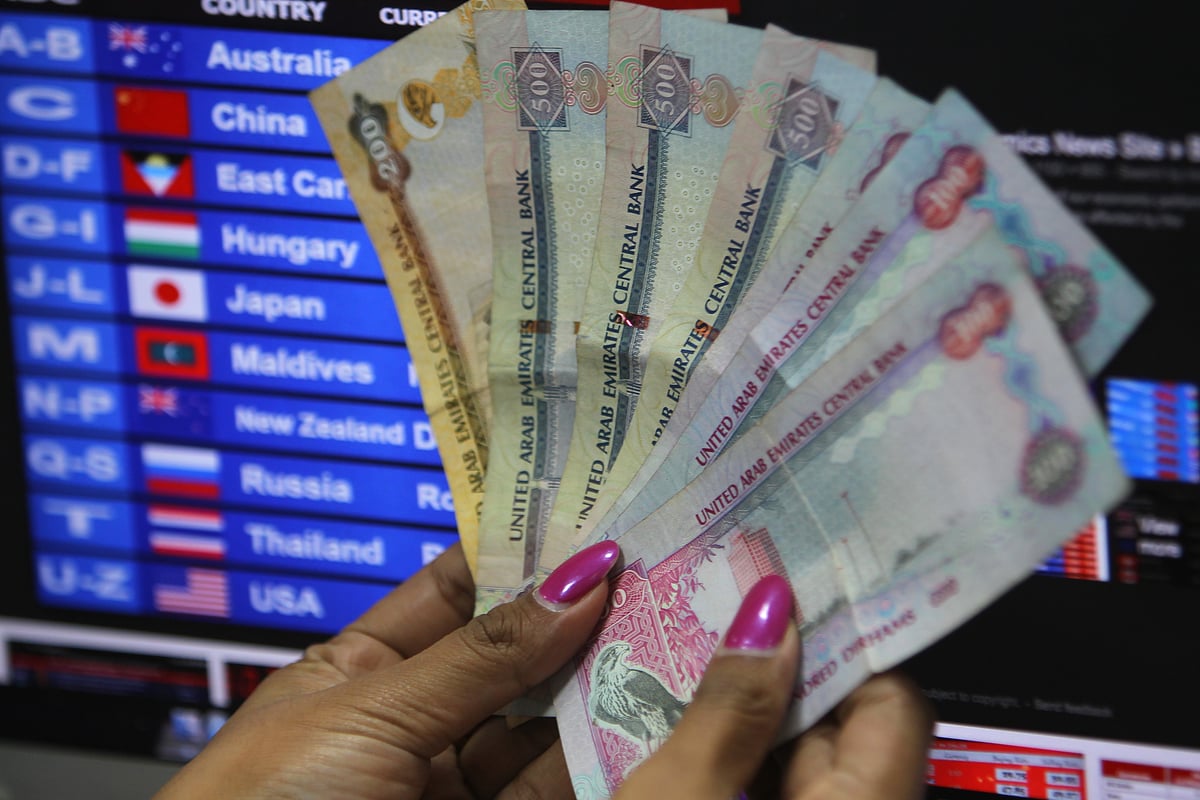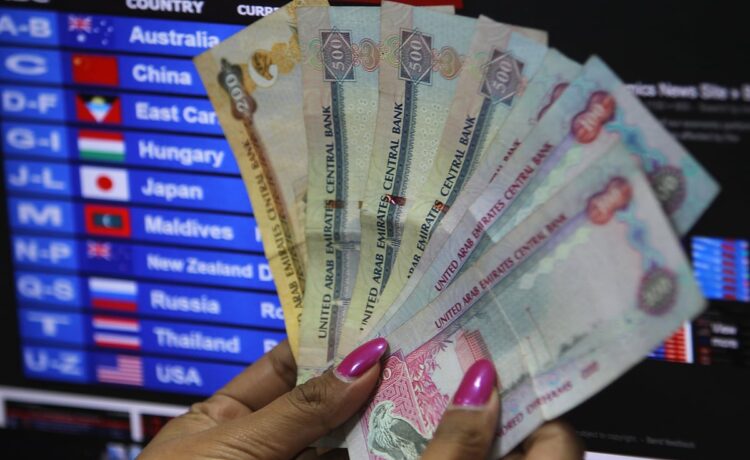
Remittances to several Asian countries from the GCC have picked up on the back of resurging dollar-pegged regional currencies as remitters embraced the convenience and cost savings offered by the digital space.
Financial experts observe a renewed jump in money sent home by expatriates after a brief lull when the Indian rupee made a strong but short-term recovery. Now, as the Indian rupee and other Asian currencies continue to decline, the trend of increased remittances from the Gulf and the US appears set to persist, exchange houses said.
After its biggest one-day jump in almost two years against the dollar three days ago, the Indian rupee started its decline, ending at 86.89 against the dollar and 23.866 against the dirham on Wednesday.
Stay up to date with the latest news. Follow KT on WhatsApp Channels.
Adeeb Ahamed, managing director of LuLu Financial Holdings, said the persistent decline in Asian currencies has created a favourable opportunity for expatriates in the UAE, leading to a notable surge in cross-border payments.
“We have observed an increase in INR remittances across our platforms compared to the same period last year, with transactions to Nepal and Pakistan also experiencing spikes. Consumers today are far more aware and digitally savvy, leveraging real-time exchange rate updates and insights provided by digital platforms. The digitisation of remittances has empowered customers with greater control and transparency, enabling them to maximize such opportunities,” said Ahamed.
Trump’s new tariff announcement
Harish Parameswaran, vice president, ComeraPay, the INR experienced a significant depreciation, which led to a noticeable increase in remittance flows to India. “The weakening of several Asian currencies was influenced by shifts in the dollar Index, compounded by Trump’s new tariff announcement, which introduced uncertainty into global markets.”
“As many individuals took advantage of favorable exchange rates, remittance activity saw a major uptick. The UAE, in particular, saw a high volume of transactions, with many opting for digital channels to send money home. This was largely driven by attractive offers, such as fee-free transactions, making digital transfers even more appealing,” said Parameswaran.
He said the digital space emerged as the dominant choice for remittances, with users embracing the convenience and cost savings it offered. “The combination of a softer dollar and the availability of affordable, user-friendly digital solutions created an optimal environment for fund transfers— especially from the UAE to India — further enhancing financial connections across borders.”
The Reserve Bank of India has stepped in to curb speculation this week, with some traders estimating that authorities intervened to the tune of $11 billion over two days. Analysts, however, don’t expect the central bank to continue to offer support on a similar scale as the focus will shift to policy easing and boosting financial-system liquidity.
DBS Bank Ltd. sees the rupee weakening to 88.8 per dollar by mid-2025, while IDFC First Bank Ltd. predicts a decline to 89.50 by December.
$129.1 billion worth of remittances
In 2024, India received an estimated $129.1 billion worth of remittances, the highest ever for a country in any year. Moreover, India’s share in global remittances was 14.3 per cent last year, the highest such share since the turn of the millennium for any country. Other top Asian recipient countries for remittances in 2024 are China ($48 billion), the Philippines ($40 billion), and Pakistan ($33 billion).
Dr. Meera Gupta, an economist at the Asian Development Bank, said the depreciation of local currencies against the dollar makes remittances more valuable for recipients. The remittance boom is not limited to India. Countries such as Bangladesh, Pakistan, and Nepal are also experiencing similar trends. For instance, the Bangladesh Bank reported a 15 per cent increase in remittances over the last quarter, bringing the total for the fiscal year to nearly $25 billion.
Dr. Anwar Hussain, a senior financial analyst based in Dhaka, noted, “The depreciation of the Bangladeshi Taka has encouraged expatriates to send more money home. The dollar is now significantly stronger, which could lead to more remittances as families strive to maintain their living standards.”
In Pakistan, where the rupee has seen a steep decline, remittances have surged by 20 per cent in the past three months, with total inflows surging above $30 billion for the fiscal year.

















